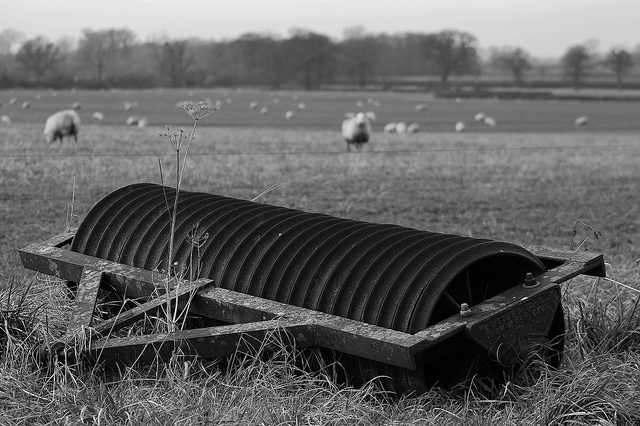
Old farm roller
Farming… in the days of yore. Image: Flickr / AndyKnight2009
Part of our Smart Farming series
When we explain to people that we continue to do a lot of research in agriculture, they assume it means we have greenhouses on the roofs of our buildings and watering cans under our desks. Ok, in some cases that may be true.
But really things are a lot more sophisticated than that these days. Take our High Resolution Plant Phenomics Centre (HRPPC) in Canberra. Phenomics is all about how the genetic make-up of an organism determines how it looks, what it does and how well it does it.
We don’t just use trowels and gardening gloves in our research- we use all manner of gadgets, including a golf buggy on stilts, a cherry picker and a helium blimp. This is what we like to call digital agriculture. At the HRPPC we have the luxury of conducting research under controlled conditions, like in the PlantScan, as well as out in the field.
This video has no audio. Digital agriculture in the field: the Phenomobile, a golf-buggy on stilts, is being driven through a field of wheat. The arm on the front of the rig supports different imaging devices that record a raft of information about the crop below so that a 3D image can be reconstructed for research.
“By applying the advances made in information technology to agriculture we are able to significantly increase the speed, accuracy and measurement quality,” said Dr Bob Furbank, Director of the HRPPC.
We use digital agriculture to improve crop yields, a fundamental part of ensuring future food security. As an example, researchers at the HRPPC use laser scanning and thermal imaging to track the growth of wheat and rice in 4D, which in turn tells us which varieties perform better under drought. As an example, we’ve made some great progress looking at how we can turbocharge rice production.
This video has a music track. Digital agriculture in a controlled environment: the TrayScan plant analysis system incorporates 3 cameras, colour, thermal and chlorophyll fluorescence, to create a 3D image of an entire tray of small plants.
“Laser scanning is routinely used to digitise people and objects for the movie industry but instead of scanning in Superman, we are scanning wheat and rice to find a Superplant”, said Bob.
To find out more about our work in laser scanning and thermal imaging to study plants, check out the HRPPC website.
Media: Mikayla Keen P: +61 2 9490 8448 M: 0467 788 023 Email: Mikayla.Keen@csiro.au

